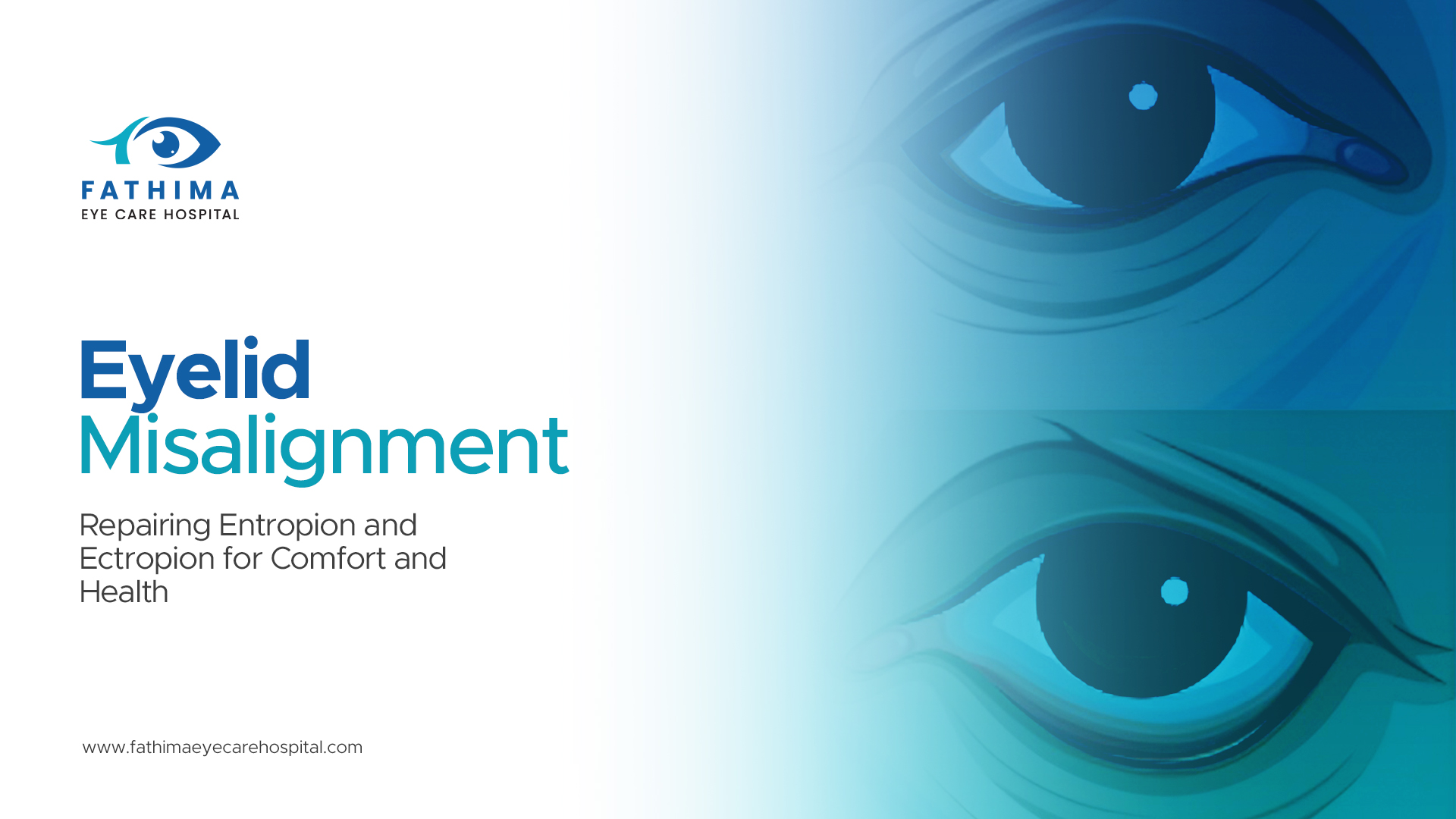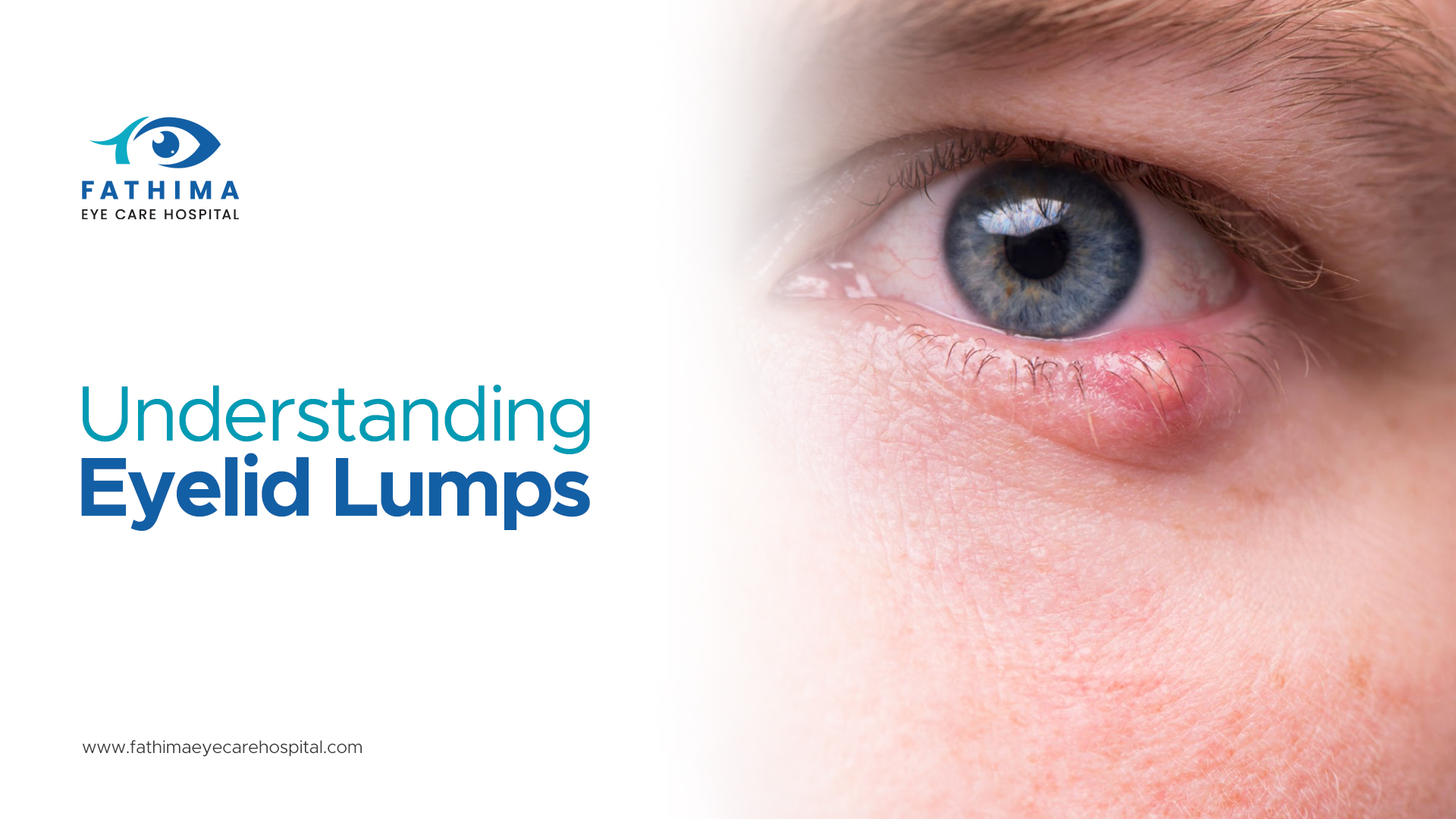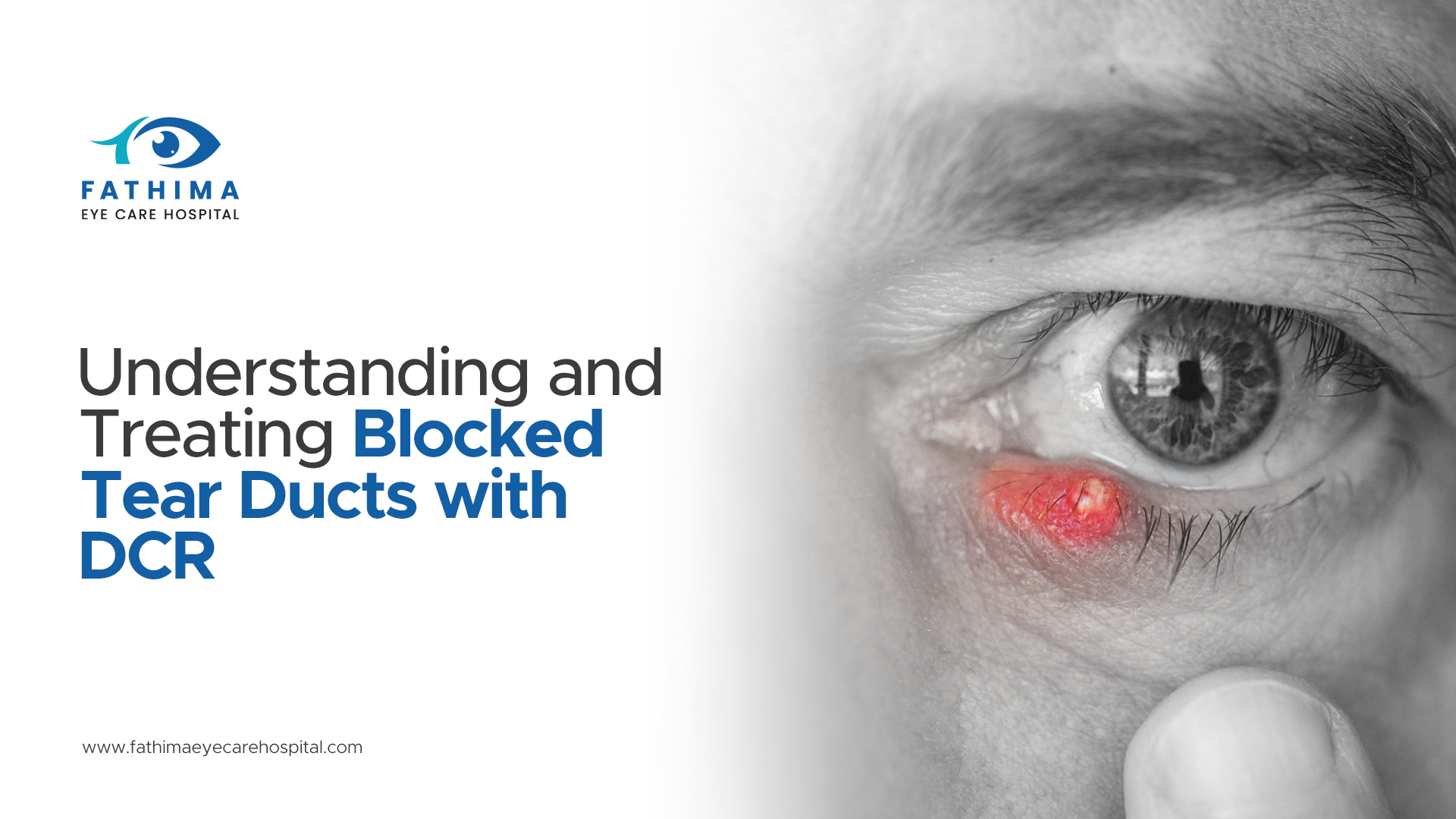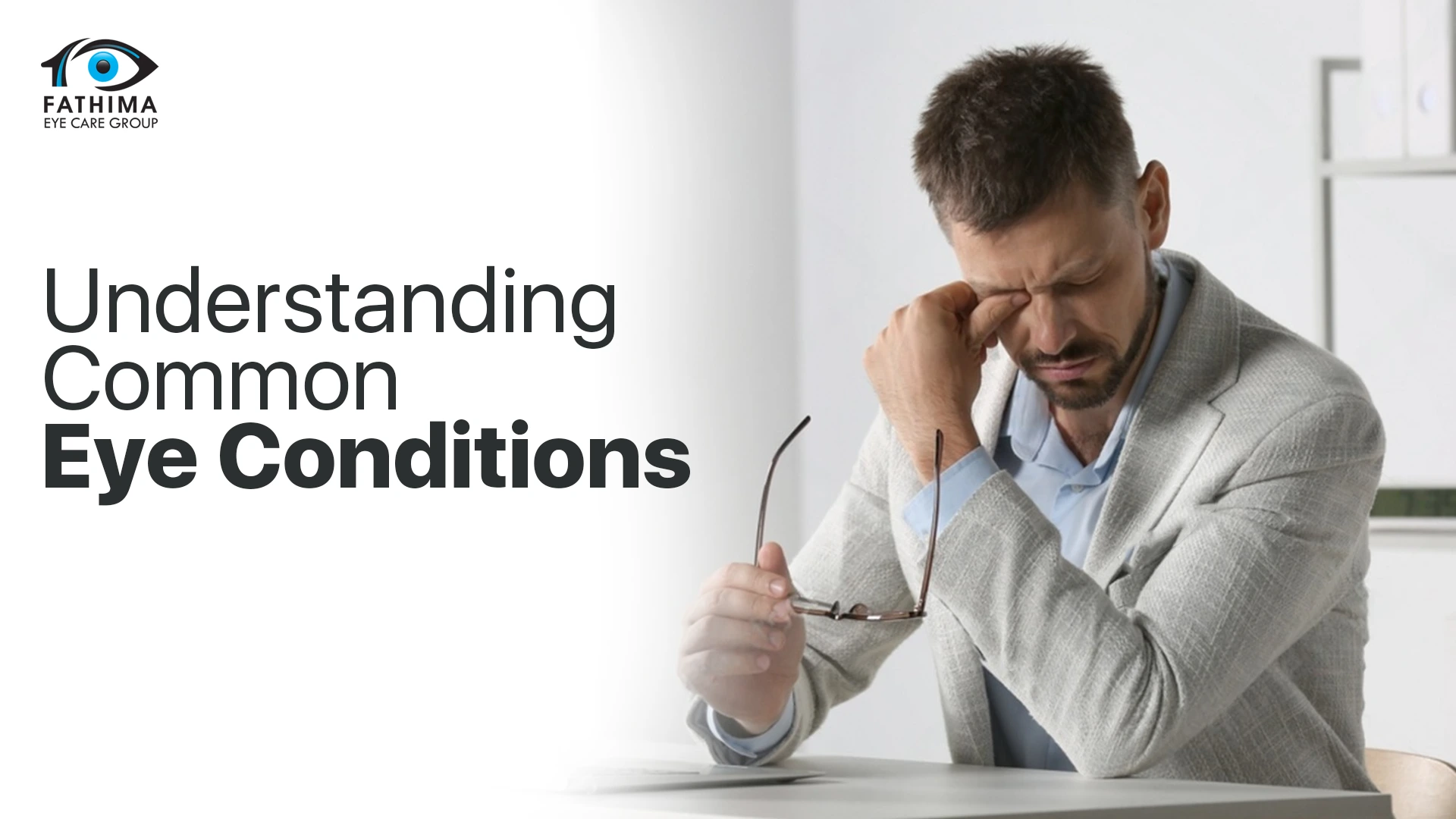

Let’s understand eye health as an essential part of our overall well-being, yet many of us tend to overlook it until something goes wrong. Our eyes, like any other organ, can suffer from various common eye conditions that range from mild discomfort to serious diseases affecting vision. Understanding these common eye conditions and learning how to identify and manage them early on can help maintain optimal eye health and prevent complications.
Here, let’s explore some of the most common eye conditions, their symptoms, and how they can be managed.
Common eye conditions
1. Dry Eyes
What It Is:
Dry eye syndrome occurs when your eyes don’t produce enough tears or when the tears evaporate too quickly. It can cause discomfort, irritation, and even blurred vision.
Symptoms:
- A gritty or burning sensation in the eyes
- Sensitivity to light
- Redness
- Blurred vision
- Feeling like something is in your eye
How to Manage It:
Use artificial tears or lubricating eye drops to keep your eyes moist. Avoid smoke, wind, and air conditioning, which can worsen dryness. In more severe cases, prescription medications or even minor surgical procedures may be recommended by your ophthalmologist.
2. Conjunctivitis (Pink Eye)
What It Is:
Conjunctivitis is an inflammation or infection of the conjunctiva, the thin, transparent layer that covers the white part of the eye. It is one of the most common eye conditions and can be caused by bacteria, viruses, allergens, or irritants like smoke or chemicals.
Symptoms:
- Red or pink eyes
- Itchy or gritty feeling
- Discharge from the eyes
- Crusts forming on the eyelids, especially after sleep
- Tearing
How to Manage It:
Treatment depends on the cause. For bacterial conjunctivitis, antibiotic eye drops or ointment are often prescribed. Viral conjunctivitis typically clears up on its own within a week or two, but cold compresses can relieve discomfort. Allergic conjunctivitis may respond well to antihistamine eye drops.

Also read : Why You Should Not Use Your Mobile Before Going to Sleep
3. Cataracts
What It Is:
Cataracts occur when the natural lens of the eye becomes cloudy, leading to blurred or reduced vision. This is one of the common eye conditions that develop gradually, especially in older adults.
Symptoms:
- Cloudy or blurred vision
- Difficulty seeing at night
- Sensitivity to light
- Seeing “halos” around lights
- Fading or yellowing of colors
How to Manage It:
Early cataracts may be managed with stronger lighting and updated prescriptions for glasses or contact lenses. However, as cataracts progress, surgery to remove the cloudy lens and replace it with an artificial one is often the best solution.
Also read : Cataract Care Made Simple: Discover Our Painless, Injection-Less Approach
4. Glaucoma
What It Is:
Glaucoma is a group of common eye conditions that damage the optic nerve, often due to high pressure inside the eye. If left untreated, it can lead to permanent vision loss.
Symptoms:
In its early stages, glaucoma often has no symptoms, making regular eye exams crucial. As it progresses, symptoms may include:
- Loss of peripheral (side) vision
- Blurred vision
- Eye pain or pressure
- Seeing halos around lights
How to Manage It:
Treatment focuses on reducing eye pressure through prescription eye drops, oral medications, laser treatment, or surgery. Early detection through routine eye exams is key to preventing vision loss from glaucoma.
5. Macular Degeneration
What It Is:
Age-related macular degeneration (AMD) is the leading cause of vision loss in people over 50 and is one of the most serious common eye conditions. It affects the macula, the part of the retina responsible for central vision.
Symptoms:
- Blurred or reduced central vision
- Difficulty recognizing faces
- Needing brighter light for reading or close work
- Straight lines appearing wavy or distorted
How to Manage It:
While there’s no cure for macular degeneration, lifestyle changes like quitting smoking, eating a diet rich in leafy greens and fish, and protecting your eyes from UV light can help slow its progression. In advanced cases, special injections or laser therapies may be recommended.
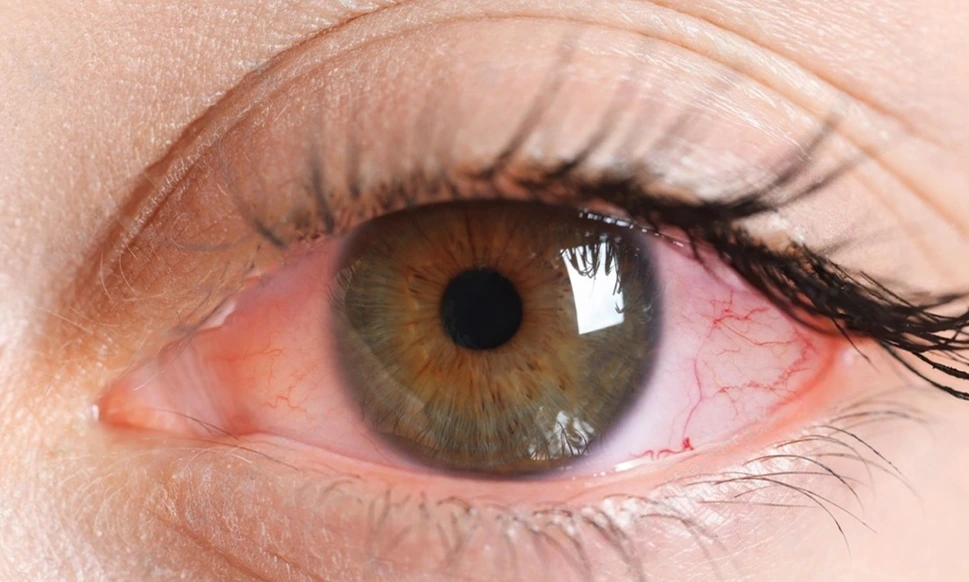
Also read : Dry Eyes – Causes, Prevention, and Treatment Options
6. Refractive Errors (Myopia, Hyperopia, and Astigmatism)
What It Is:
Refractive errors occur when the eye does not focus light properly, causing blurred vision. The most common eye conditions in this category include:
- Myopia (Nearsightedness): Difficulty seeing distant objects clearly.
- Hyperopia (Farsightedness): Difficulty seeing close objects clearly.
- Astigmatism: Distorted or blurred vision due to an irregularly shaped cornea.
Symptoms:
- Blurred vision (near or far, depending on the condition)
- Eye strain
- Headaches
- Difficulty focusing
How to Manage It:
Corrective lenses such as glasses or contact lenses are the most common treatment. Laser eye surgery, such as LASIK, is also an option for those seeking a permanent solution.
Let’s conclude with an understanding that your eyes play a critical role in your daily life, and taking care of them should be a priority. Regular eye exams are crucial for detecting common eye conditions early and managing them effectively. Many common eye conditions, such as dry eyes, conjunctivitis, and refractive errors, can be managed with lifestyle changes, medications, or corrective lenses. For more serious conditions like glaucoma, cataracts, or macular degeneration, early intervention is key to preserving your vision.
Don’t wait until vision problems interfere with your daily life. At Fathima Eye Care, we offer comprehensive eye exams and treatments for a wide range of common eye conditions. Whether you need routine check-ups or advanced care, our expert ophthalmologists are here to help. Book your appointment today and ensure your eyes get the care they deserve for a lifetime of healthy vision. Call us now or visit our website to schedule your consultation!




